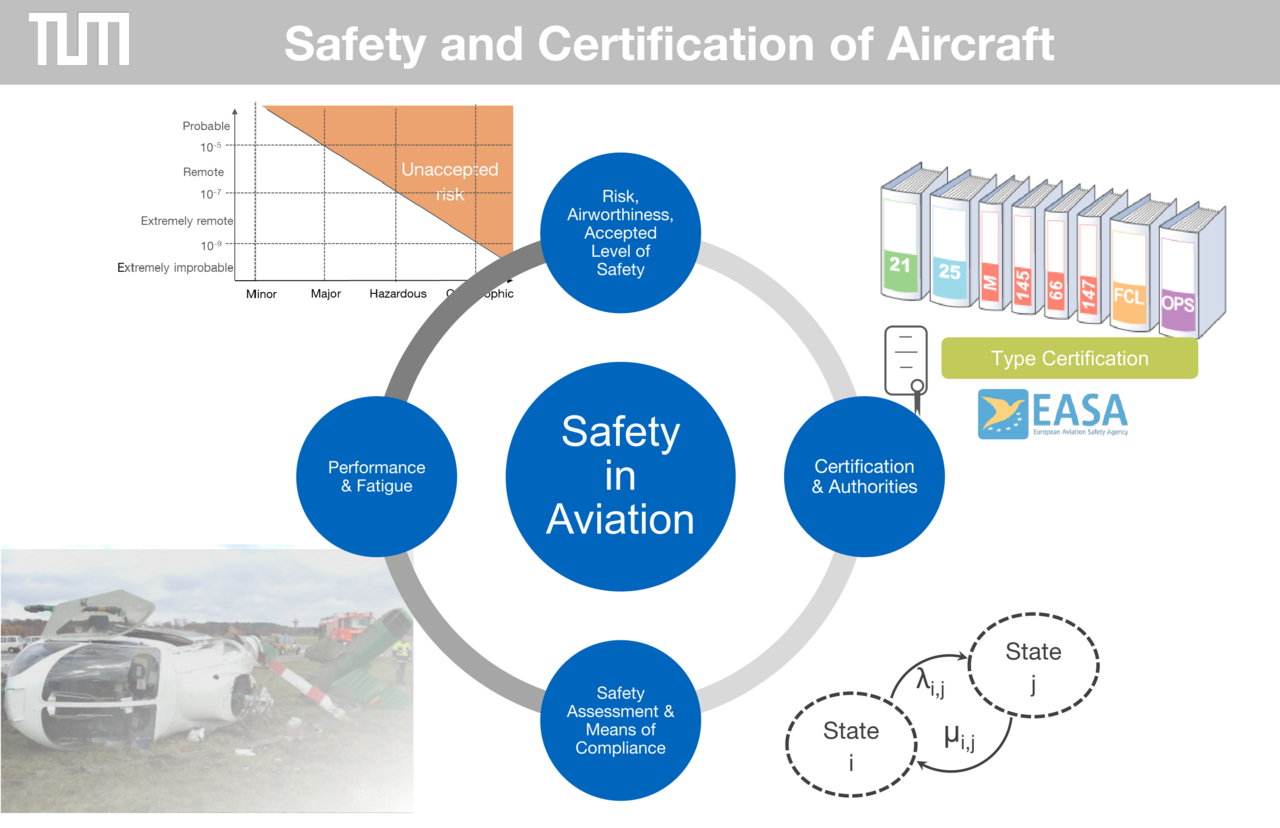
Welcome!
Thank you for your interest in aviation safety and our 3 SWS master lecture.
"If you think safety is expensive, try having an accident"
STELIOS HAJI-IOANNOU (Founder of Easyjet)
Nowadays, safety and certification are one of the most essential engineering disciplines in aviation. In the 1970s and 1980s, many terrible accidents have shown the importance of a systematic development processes for aircraft & their subsystems. These efforts have paid off in recent years: Today, aviation is among the safest modes of transportation. Results from accident and incident investigations are continously monitored by the authorities to update regulations and maintain a proper level of safety.
"Catastrophic failure conditions must be extremely remote"
FAA AC.25.1309-1A
Besides typical engineering taks like structural dynamics, CFD or FEM, Aviation engineers of today are required to understand how to "design safety into an airborne system". Several standards have been developed for a systematic development process of safety critical systems. Many of these standards define risk as a combination of occurrence and outcome of a specific failure. Understanding this approach and the interdependencies between authorities, manufacturers and operators plays a central role in this module.
Module Description
After the successful completion of the module, students will be able to understand the central concept of safety in aviation, in particular in its central role for sizing and design. Students will also know about the targeted level of safety, which is permanently prevalent as the primary design goal, in its technical relevance as well as in the legal context of aviation law. Based on the major elements of the airworthiness codes, students will be able to apply design principles for stress, reliability, and probability of failure on subsystems of aircraft and assess existing concepts with respect to airworthiness. In this context, students will also understand recent developments in certification. Furthermore, they will be able to apply hazard analysis techniques to assess safety through all system hierarchy levels and use them to determine effects on the overall aircraft. The students will be able to identify the interaction between safety aspects and performance.
Course Outline
The module covers following topics:
- Safety in aviation, airworthiness, risk, airworthiness, fault, failure
- Regulations and certification process (CS, SORA, Design Organization Approval)
- Safety analyses (Fault Tree Analysis, Markov chains)
- Stress and fatigue
- Performance categories (WAT curves, CAT A requirements of Helicopter, ETOPS)
- Aircraft accident & incident investigation
Registration and Schedule
The next lecture will take place in the summer semester 2022. Information will be provided here